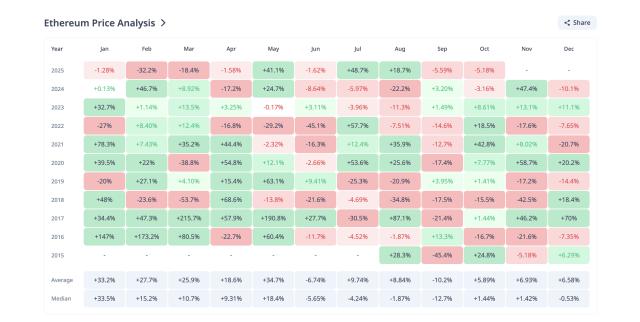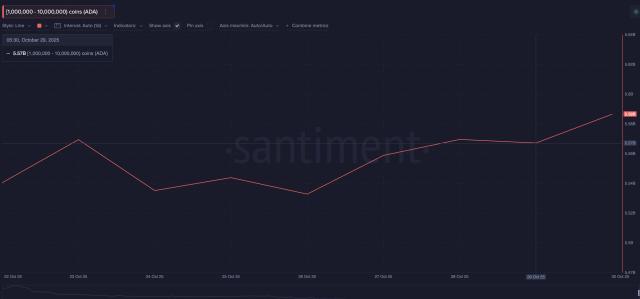DeriW may be becoming the starting point of a new round of dividends.
In March 2025, Hyperliquid's JELLY perpetual swap contract was manipulated, effectively shattering its decentralization credentials. In this incident, attackers were able to manipulate the JELLY token's mark price with just a few million dollars, causing massive margin calls and ultimately forcing the liquidity pool to absorb $10.63 million in potential losses.
To stem the flow, Hyperliquid voted to delist the contract and liquidate all positions, a move the community called a blatant "wire-pulling" operation. This also confronted the market with a harsh reality: beneath the veneer of decentralization, the funding pool is the true payer.
Of course, Hyperliquid isn't an isolated case. GMX's GLP pool and dYdX's insurance fund follow a similar logic: when liquidations fail, losses are ultimately passed on to the pool or fund to cover the losses. On the surface, this is a sound design, but in extreme market conditions, it means all LPs are left footing the bill for a small number of liquidated positions. This is also the biggest flaw of the entire perpetual DEX model.
When the previous generation of perpetual contracts was unable to break out of the dilemma between performance, decentralization, and security, DeriW provided another answer.
DeriW's secret weapon
DeriW is a next-generation perpetual contract DEX built on Arbitrum Orbit. In stark contrast to existing industry paradigms, its integration of the Pendulum AMM (a pendulum-style dynamic liquidity pool) with a Layer 3 architecture not only effectively cuts off risk transmission at the mechanism level but also addresses a series of persistent issues exposed by platforms like Hyperliquid, which operate under a passive liquidity model.
At the same time, DeriW can provide a speed and smoothness experience close to that of centralized exchanges, while retaining the transparency and non-custodial attributes that DeFi should have, while providing high-leverage transactions for more than 100 assets, with a zero gas and extremely low-fee structure, further opening the door for high-frequency and professional users.
Layer 3 + Pendulum AMM mechanism directly addresses the funding pool dilemma
Hyperliquid's predicament reveals the essence of the existing model: the liquidity pool is the ultimate bearer of all risk. DeriW's Pendulum AMM mechanism aims to restructure the funding pool logic from the source, while providing a performance foundation based on its proprietary Layer 3 architecture.
Risk isolation and pricing
The core innovation of the Pendulum AMM lies in transforming the capital pool into a closed-end fund. Once fully subscribed, each tranche is locked in place, preventing free movement of funds. Principal and returns are returned based on shareholdings only upon maturity. This institutionalized design eliminates the vulnerability of the capital pool to sudden withdrawals, ensuring stable scale and controllable structure, and providing more predictable returns for LPs.
On this basis, the scale of trades is directly determined by the net floating profit and loss of both long and short parties. The more intense the competition, the more the capital pool automatically expands, releasing capacity beyond its original holdings and allowing limited capital to be squeezed to its maximum potential. Simultaneously, the system monitors three key parameters in real time: net floating profit and loss of positions, realized losses in the capital pool, and initial capital size. If any deviation from safety thresholds occurs, the model automatically tightens the position and charges an additional management fee to the high-risk party, effectively shifting the risk cost back to the trader, rather than the LP.
More importantly, Pendulum AMM localizes shocks through risk isolation and automatic position reduction mechanisms. Even if a single asset pool is devastated during extreme market conditions, the risk is locked within a single pool and prevents it from escalating into a systemic crisis on the platform.
Fair Liquidation
Based on the above mechanism, DeriW's liquidation price is determined by both leverage and margin: 10x leverage has a liquidation rate of 95%, 20x leverage has a liquidation rate of 90%, and 30x leverage has a liquidation rate of 85%. Once a position reaches a threshold, the system immediately executes liquidation, prioritizing margin to absorb losses. The fund pool only intervenes passively through slippage in extreme imbalances.
This rule not only makes liquidations fairer but also significantly reduces systemic risk. Even in the "high leverage + low collateral" manipulation scenario, the system can mitigate the impact through dynamic adjustments to fees and thresholds, without requiring community votes or project intervention. This stands in stark contrast to Hyperliquid's "plug-and-play" operation in the JELLY incident, highlighting the decentralized fairness of DeriW.
At the same time, all DeriW transactions and settlement data are transparently executed on Layer 3 and ultimately submitted to Ethereum, inheriting its security and data availability. Users not only have full control over their assets but can also verify on-chain data at any time and even initiate challenges through Layer 1's fraud proof mechanism. This transparency and censorship resistance frees the system from black-box operations and single points of control.
The ultimate experience brought by Layer 3 performance
Any complex mechanism requires performance. DeriW's Layer 3, built on Arbitrum Orbit, not only supports 80,000 TPS throughput and zero gas costs, but also ensures instant liquidation even in extreme market conditions. For users, this means achieving speed and fluidity in DeFi that approaches that of centralized exchanges, while retaining the open, transparent, and non-custodial security attributes.
DeriW is notably developed by the established exchange CoinW. The team has eight years of experience in perpetual contracts and has passed the CertiK audit. This background provides real-world validation for the platform's stability and credibility, a prerequisite for gaining market trust.
Dimensionality reduction attack on transaction efficiency
The flaws of the traditional order book model continue to emerge:
- When liquidity is insufficient, pending orders are delayed, and delays and slippage are rampant;
- High-frequency traders find it difficult to implement their strategies, while small users are constantly being eroded by hidden costs.
DeriW uses Pendulum AMM with its self-developed Layer 3 to keep the entire process close to the speed and smoothness of CEX while maintaining decentralization, openness and transparency.
In terms of costs, the funding rate is set directly to zero. Market balance is handled by the AMM's built-in dynamic slippage, which is only triggered when there is a significant imbalance between long and short positions. The handling fee is fixed at 0.01%, which is the lowest in the industry. Compared to mainstream platforms with fees of 0.02%–0.05%, this combination of low fees and zero funding rate significantly reduces the friction costs of long-term holding and high-frequency trading.
The combined advantages of efficiency and cost are allowing DeriW to launch a real dimensionality reduction attack in the highly homogenized perpetual DEX market and gradually build its own moat.
A deeper strategic layout
Beyond the aforementioned innovations, DeriW's potential also stems from its parent ecosystem, CoinW. In terms of brand and market expansion, CoinW is also expanding its influence through cross-border collaborations between sports and fashion. From LaLiga and the East Asian Football Cup to GQ STYLE FEST, these initiatives have rapidly brought crypto brands into the mainstream and opened up a broader external market for DeriW.
Furthermore, DeriW has partnered with Zand Bank of Dubai to jointly issue an on-chain stablecoin, providing users with a more reliable financial gateway. This means that DeriW's growth path stems from internal competition within the sector while further providing DeFi users with a reliable financial gateway, laying the foundation for DeriW's reshaping of its narrative logic.
As the mainnet data grows and TGE approaches, the narrative of technology and ecology superposition is expected to gradually help DeriW gather market consensus and become the mainstay of sustainable DEX in the next industry cycle.
DeriW TGE is coming soon
As the DeriW mainnet continues to heat up, the community's focus is gradually shifting to its upcoming TGE event.
In terms of data, DeriW has more than 200,000 active users in the testnet phase alone, and since the launch of the mainnet on August 4, the cumulative transaction volume has exceeded US$190 million. It is favored by high-frequency and professional traders. DeriW's "zero fees + high performance" has become a significant attraction.
Meanwhile, the Supernova+ incentive program is warming up for the TGE. Users accumulate DER+ points through trading and referrals, which can be used for future quota redemptions or airdrops. 5 points are awarded for every $50 in trading volume, while referral bonuses can bring an additional 300%. Existing testnet users also receive an additional 5-20% bonus. This "trading while mining" model is fueling interest in the TGE.
Meanwhile, the rapid expansion of DeriW's parent ecosystem, CoinW, is also driving up expectations. Its platform token, CWT, recently hit a record high of $1.32, a more than 20-fold increase in a single month, providing strong support for DeriW's narrative.
Coupled with the strategic cooperation with Dubai Zand Bank, DeriW is gradually entering the field of stablecoins and RWA, connecting traditional financial assets with the on-chain derivatives market and unleashing new imagination.
Considering DeriW's early performance and growth potential on both the testnet and mainnet, the market generally anticipates its rapid market capitalization rivaling that of leading perpetual DEXs following its TGE. For comparison, Hyperliquid's current market capitalization has surpassed $18 billion. Driven by its combined strengths in technology, ecosystem, and narrative, DeriW is being viewed as the next challenger poised to disrupt the dominant market.
Summarize
As the market enters a new phase, perpetual swap DEXs stand at a watershed. Practice has proven that the model solely driven by liquidity has reached its limits, with the Hyperliquid case clearly demonstrating the limitations of the old paradigm. DeriW, on the other hand, is reshaping the rules and establishing a new system through a series of technological innovations, breaking the trilemma between performance, decentralization, and security, and providing a fresh approach to sustainable development in this sector.
In the last cycle, Hyperliquid seized the liquidity dividend and rose rapidly; in the new market stage, DeriW is making technological and institutional breakthroughs to better meet the market's demands for security and capital efficiency, and is expected to achieve a new round of on-chain derivatives paradigm change.
The old market dividends have been exhausted, and DeriW may be becoming the starting point of a new round of dividends.





